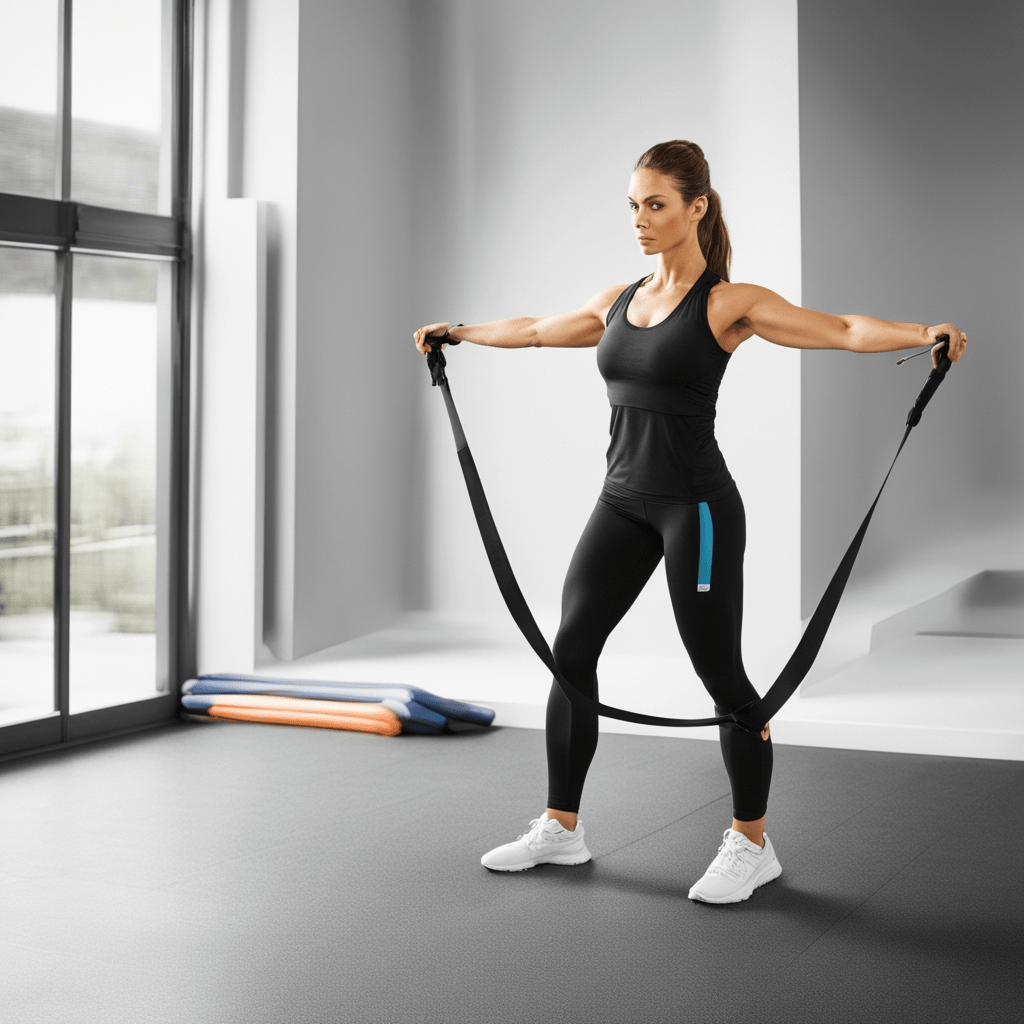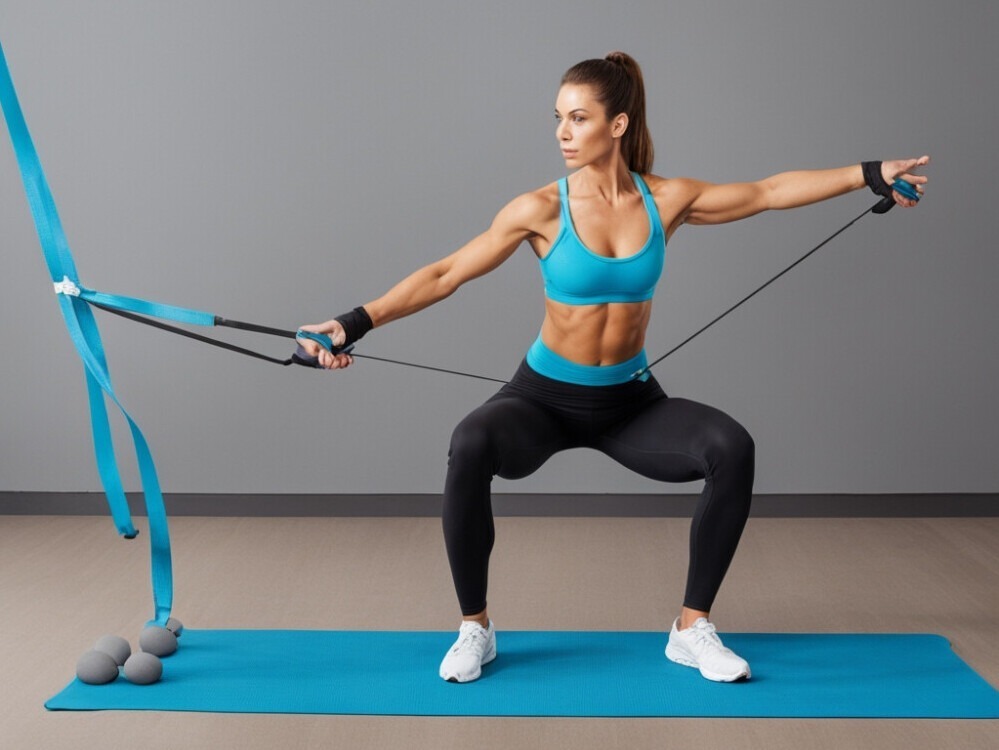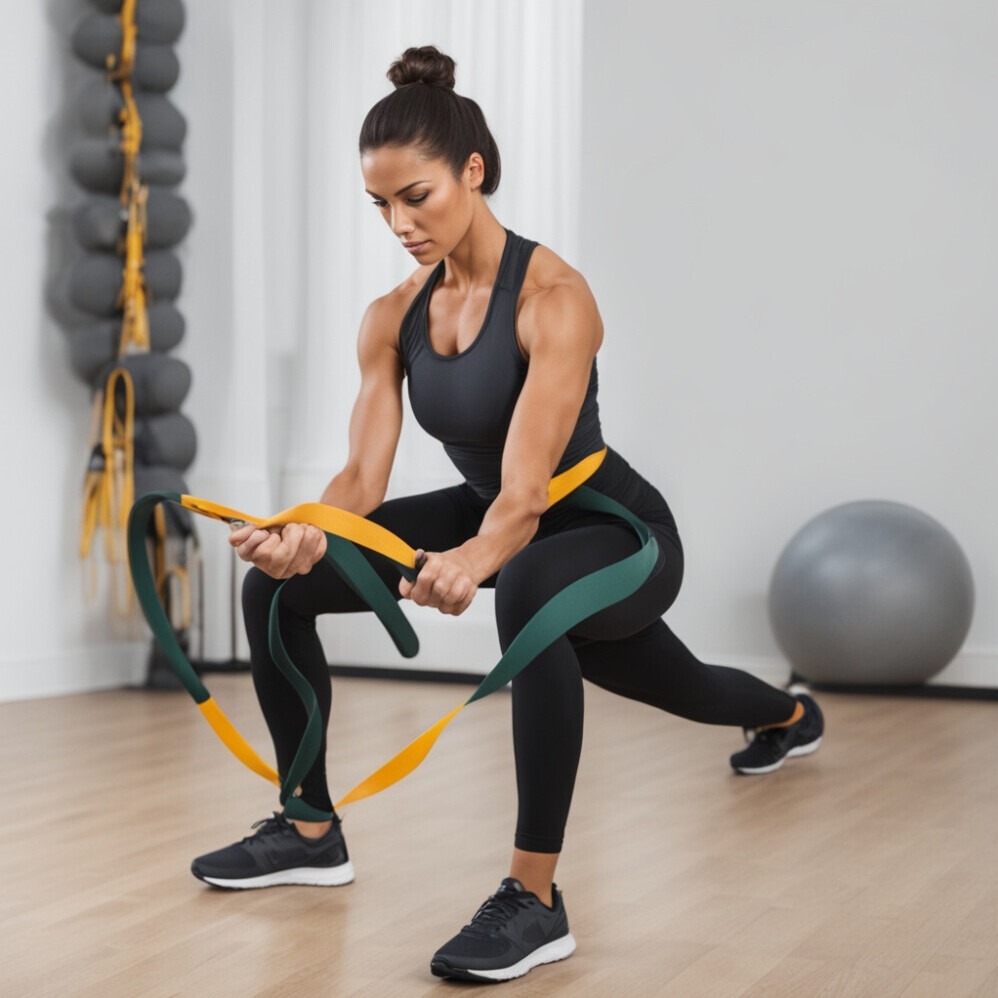
Everyone can benefit from taking part in resistance bands for strength training. There’s many ways and many benefits to be gained, and that goes for either gender. This is because there’s several types of resistance bands for strength training.
In this post you’re going to learn why you should be taking part in this physical routine, how you can get involved and the best ways to avoid injuries during your workout.
Resistance Bands For Strength Training
Resistance bands are one of the most accessible and affordable tools you can add to your strength training kit. Whether you’re a beginner or a seasoned athlete, resistance bands for strength training provide a variety of benefits that make them a fantastic addition to any fitness routine.
Why Choose Resistance Bands For Strength Training?
Resistance bands offer an excellent combination of affordability, portability, and versatility. They are relatively inexpensive, often costing less than a single dinner out, and their compact size means they can be easily stored at home or packed in a suitcase for travel.
Unlike bulky weights or machines, resistance bands for strength training can be used anywhere—whether you’re squeezing in a workout at home, at the park, or even in your hotel room while on the go. This portability makes them ideal for those with busy schedules who need flexibility in their workout routine.
Benefits of Resistance Bands For Strength Training
- Affordability: Resistance bands are an economical option for anyone looking to start or enhance their strength training routine. You can purchase bands with different levels of resistance without breaking the bank.
- Portability: The compact nature of bands makes them easy to store or take with you when traveling. This means no excuses for missing workouts when you’re away from home.
- Versatility: Whether you’re targeting your upper body, lower body, or core, resistance bands for strength training can be used in a variety of exercises. From squats and lunges to chest presses and rows, bands provide a full-body workout option.
- Adaptability: Resistance bands cater to all fitness levels. Beginners can start with lower resistance, while advanced athletes can increase the challenge by using bands with higher tension. The adjustable resistance levels help you progress as you grow stronger.
- Joint-Friendly: For those with joint issues or recovering from injuries, resistance bands are a great tool. They offer a smooth, controlled range of motion, reducing the impact on joints while still engaging the muscles effectively.

How to Incorporate Resistance Bands Into Your Strength Training Routine
Incorporating resistance bands for strength training is simple, but choosing the right type of band is key to maximizing their effectiveness. There are several types of bands, including flat bands, loop bands, and tube bands with handles, each suited for different exercises.
Types of Resistance Bands
- Flat Bands: Commonly used for rehab and therapy exercises, these bands are ideal for stretches and warm-ups.
- Loop Bands: These are perfect for lower body workouts, such as squats, leg lifts, and glute bridges.
- Tube Bands with Handles: Ideal for upper body exercises, including bicep curls, shoulder presses, and rows.
Resistance Bands Warm-Up Techniques
Warming up before starting any resistance band strength training is crucial to prepare your muscles and prevent injury. Using a light resistance band for dynamic stretches can help increase blood flow and flexibility. For example, try shoulder circles, banded leg swings, or arm extensions to loosen up the muscles before engaging in more intensive exercises.
Effective Resistance Band Exercises For Strength Training
Whether you’re just starting your fitness journey or looking to challenge yourself, resistance bands for strength training offer a variety of exercises suitable for all levels. Here are some to incorporate into your routine:
1. Banded Squats
Squats are a staple lower-body exercise, and adding a resistance band increases the intensity, particularly for the glutes and thighs.
- How to Perform: Place a loop band just above your knees. Stand with feet shoulder-width apart, then lower into a squat position while pushing your knees outward to keep tension on the band.
2. Standing Rows
This is a great exercise for targeting your upper back and shoulders.
- How to Perform: Secure a tube band with handles to a sturdy object at waist height. Hold the handles and pull them toward your torso, keeping your elbows close to your body.
3. Chest Press
The chest press strengthens the pectoral muscles, and using a resistance band can simulate the movement of dumbbells or machines.
- How to Perform: Secure the band behind you at chest height, hold the handles, and press forward, extending your arms fully.
4. Glute Bridges
Perfect for strengthening the glutes and hamstrings, glute bridges are made more effective with resistance bands.
- How to Perform: Place a loop band around your thighs and lie on your back with knees bent. Lift your hips toward the ceiling, squeezing your glutes, then lower back down.
5. Resisted Push-Ups
Add a challenge to your standard push-up by using a resistance band to increase resistance on the way up.
- How to Perform: Loop a band across your upper back, holding the ends in your hands. Perform a push-up, feeling the added resistance as you press away from the floor.

Creating a Balanced Resistance Band Strength Training Routine
To get the most out of resistance bands for strength training, create a balanced workout plan. Here’s a simple routine to follow:
- 1st Day (Upper Body): Banded chest press, rows, shoulder presses, and bicep curls.
- 2nd Day (Lower Body): Banded squats, lunges, glute bridges, and leg lifts.
- 3rd Day (Core Focus): Banded Russian twists, standing ab rotations, and plank leg lifts.
Alternate between these workouts to target all muscle groups and promote full-body strength.
Tracking Progress and Setting Goals With Resistance Bands
Tracking your progress is essential for maintaining motivation and seeing results. Keep a workout log where you note which exercises you performed, the resistance level of the band, and how many sets and repetitions you completed. Gradually increase the band resistance or number of reps as you progress.
Setting small, incremental goals is key to continual improvement. For example, aim to complete an extra set of an exercise, or move up to a higher resistance band as you get stronger.
Common Mistakes to Avoid
When using resistance bands for strength training, avoid these common mistakes:
- Using Incorrect Resistance: Choosing bands that are too light won’t challenge your muscles, while bands that are too heavy could lead to improper form or injury.
- Improper Form: Form is crucial when using resistance bands. Avoid jerky movements and focus on controlled, smooth motions to maximize the benefits of each exercise.
Watching tutorial videos or consulting a certified trainer can help you master these techniques.
Maintenance and Care of Resistance Bands
To ensure your resistance bands for strength training last as long as possible, proper maintenance is key. After each workout, wipe the bands down with a damp cloth to remove sweat and dirt.
Store them away from sharp objects, excessive heat, and direct sunlight, which can degrade the elasticity. Regularly inspect the bands for signs of wear and tear, such as cracks or thinning, and replace them when necessary.

Final Word On Resistance Bands For Strength Training
Resistance bands for strength training offer an effective, low-impact, and versatile way to build strength at any fitness level. By incorporating them into your routine, tracking progress, and taking care of your equipment, you can experience all the benefits these simple but powerful tools have to offer.
Take your training and health to a new level and if you have any questions or comments, just reach out.
Ultimate Training Gear.






